Route 20 Chess Club
Freeport, Ill., Sept. 14, 2010
1.d4 d5 2.c4 e6 3.Nc3 Nf6 4.Nf3 Nc6
Although 4...Nc6 looks like a book move, it actually works out poorly for black on average, no doubt because it inhibits the advance of black's c-pawn.
5.Bg5 Be7 6.e3 0-0
A more critical response for black is 6...b6 7.cxd5 exd5. As played, a good plan for white is to play Bd3, a3 and 0-0, while black can consider h6, b6 and Bb7.
7.Bd3 h6 8.cxd5 exd5 9.Bxf6 Bxf6 10.Qc2
Not a particularly good idea for various reasons, the most salient of which is 10...Nb4. 10.a3 being unnecessary because of the bishop trade, better choices for me are 10.0-0, 10.Rc1 and 10.Qb3, in response to any of which Steve should pull his knight back to e7 and advance his c-pawn to support d5.
10...g6 11.0-0 Ne7 12.Rfe1 Re8 13.e4 dxe4 14.Rxe4 Bf5 15.Rf4 Bxd3
Steve can manhandle the rook with 15...Bg5, forcing a trade with 16.Nxg5 hxg5 and ending up with the initiative and a slight advantage after 17.Rf3.
16.Qxd3 Kg7 17.Re1 Nf5
A battle royal is shaping up around d4, and I have to be careful, because if I let Steve initiate it, ...Rxd1 will be the end of me. 18.Rxe8!? Qxe8 19.g4 defuses the attack and puts Steve on the defensive, but I opt for something more wu-wei.
18.d5?!
Positionally, it's not much, but it puts Steve on tilt.
18...Qd6 19.Rfe4! Rxe4 20.Nxe4
Not the inferior 20.Rxe4 or 20.Qxe4, either of which lets the initiative slip away and gives Steve a chance to ratchet up the pressure on my d-pawn again with 20...Rd8.
20...Qb4??
Walks into a trap I wish I knew I was setting. It begins with 21.Nxf6!; 20...Qe7 defuses it.
21.Nxf6!
Threatening to win the exchange with 22.Ne8+ Rxe8 23.Rxe8. But there's even more nastiness packed into this apparent trade offer that isn't really.
21...Kxf6??
The obvious move, right? What could be wrong with it?
There's a surprising killer move here. Don't feel bad if it escapes you; I'd never have thought of it either. (Highlight to reveal answer.)
The unassuming 22.a3!! leaves black bereft of chances. His best reply is 22...Qxb2 23.Rb1 Qxb1+ 24.Qxb1, where white wins a queen for a rook and a pawn. Next-best is 22...Qxe1+ 23.Nxe1 -- white has only a queen for a rook, but black will fall apart after 23...Ke7 24.Qe4 or 23...Rc8/d8 24.Qc3+. If black's queen runs, abandoning the defense of c3 leads to a mating net -- e.g., 22...Qa5? 23.b4 Qa4?? 24.Qc3+ Nd4 25.Qxd4+ Kf5 26.g4# (23...Qb6? only prolongs the inevitable). If black's queen doesn't run, she dies. Ouch!
OK, back to what actually happens.
22.Qxc3+? Qxc3 23.bxc3 Rd8 24.c4 b6 25.a4 a5 26.g4 Nd6 27.Nd2 g5
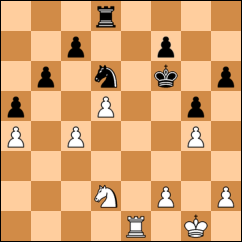
28.Ne4+
Steve can easily force a rook trade with 28...Re8. It's probably time for me to bring my king into the action with 28.Kg2. Otherwise, if it comes down to KNP vs. KNP endgame, Steve will invade my backfield with little difficulty. I may have more space, but his pawn chains are intact. Also, my momentary blockage of the e-file gives him the chance to slip across to the queenside -- a chance I should not give him.
28...Ke5 29.Nxd6+ Kxd6 30.Re4
Better is 30.f4!?, daring Steve to double his pawns.
30...Rd7
A time-waster. 30...c6 is potent and timely.
31.f4
Fine a moment ago; stupid now. It leaves me vulnerable to 31...Re7! 32.Rd4 Re8 33.fxg5 hxg5, where Steve controls the open file and my rook just looks sad.
31...Kc5
Still nasty in its own right.
32.fxg5 hxg5 33.Kg2?
33.Kf2 is better. There's trouble a-brewin' on the queenside.
33...f6 34.Kg3? Kb4! 35.h4 gxh4+ 36.Kxh4 Rh7+ 37.Kg3 Rg7??
This stumble returns us to positional equality, but Steve regains his footing quickly.
38.Kf4 Kxa4
39.c5+
In this position, the second-best move turns out to be a costly mistake. My only advantageous choice is 39.Kf5 Kb4 40.Kxf6.
39...Kb5 40.cxb6 cxb6 41.d6
Second-best again. This is no time for second-best! 41.Kf5 Kc5 42.Kxf6 Kxd5 43.Re5+ Kd4 44.g5 retains an edge.
41...Rd7 42.Rd4??
After the game, Steve points to this as my fatal error, telling me that 42.Re6 would have held me together. It's vastly better than 42.Rd4, that's for sure, but the best choice, counterintuitively, is 42.g5 fxg5+ 43.Ke5.
42...Kc5 43.Rd1 Rxd6 44.Rxd6 Kxd6 45.Kf5
45...Ke7 46.Ke4 a4 47.Kd4 a3 48.Kc3 b5!
Aw, daaang.
49.Kb3 b4 50.Ka2
It's either this sad little two-step or watch the a-pawn queen.
50...Kd6 51.Kb3 Kc5 52.Ka2 Kc4 0-1
EOG.

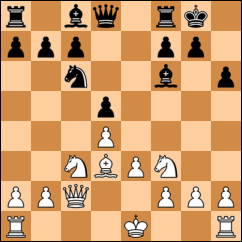
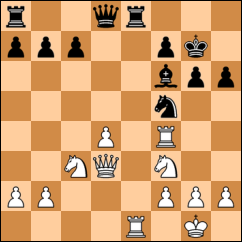
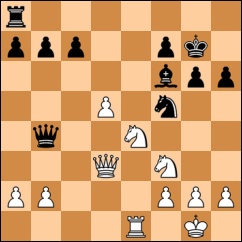
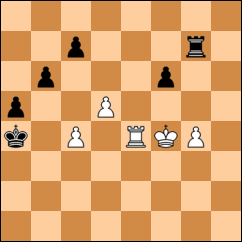
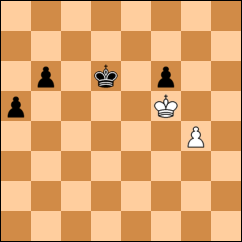



0 comments:
Post a Comment